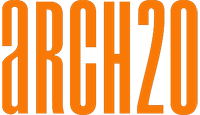Zaha Hadid had, without doubt, a unique style. Hard to define, impossible to copy, Zaha created an entirely new dogma that forever changed the face of contemporary architecture. Her legacy is carried on, not only by her firm, Zaha Hadid Architects, but by every architect or student that has ever come into contact with her ideology.
Today, Patrik Schumacher has written on Facebook about his own first encounter with the genius that was Zaha Hadid, while he was a student at the University of Stuttgart in the mid-eighties. He makes a quick review about the manner in which Zaha “has shifted the bounds of architectural possibilities”. Not only has Hadid created “new degrees of freedom” for architects and designers and has permitted architectural research to go beyond its straight angle existence, “in exchange for hundres of new angles that could be utilized”.
The universe unveiled by Zaha was, according to Schumacher, dictated by three large directions, each of them seaming surreal at the time of its birth. The first move was the one of “translating the dynamic curvelinearity of rapid calligraphic sketching literally into an architectural drawing that was then read as an intended geometry to be built, rather than treating the curvature of a rapid sketch as a rough accidental indication of an ideal geometric form which was meant to be rationalized into straight lines and arcs”. Zaha’s shapes continuously changed in curvature, offering an unprecedented versatility to the architectural form. He describes her compositions as dynamic and fluid, yet coherent and logical, which create an environment easy to absorb. Therefore, the “problem solving” and language of architecture increased its versatility, with a “much richer, more expressive and more communicative repertoire of organization”.
The second direction Schumacher depicts is the fact that “. Zaha built up pictorial spaces within which multiple perspective constructions were fused into a seamless dynamic texture. One way to understand these images is as attempts to emulate the experience of moving through an architectural composition revealing a succession of rather different points of view. Another, more radical way of reading these canvasses is to abstract from the implied views and to read the swarms of distorted forms as a peculiar architectural world in its own right with its own characteristic forms, compositional laws and spatial effects.”
Again, Schumacher emphasizes the clear relation between the multitude of forms in the composition and the “strong sense of coherence” existent. The transition is smooth, mediating “large quiet areas with very dense and intense zones”. Zaha’s architectural compositions have more than one focus point or one direction, but are rather the result of “interpenetrating perspective projections”, the intensities being enhanced by the use of “curved instead of straight projection lines”. While his initial discourse refers to Zaha Hadid’s sketches and overall ideology, there is a shift towards a more digital approach, Patrik Schumacher stating that “The effect achieved is very much like the effects currently pursuit with curve-linear mesh-deformations and digitally simulated “gravitational fields” that grip, align, orient and thus cohere a set of elements or particles within the digital model.”
The third tendency Schumacher discusses is the introduction of gradients into the architectural spectrum, concluding that “Instead of dissecting and ordering space by walls the landscape analogy suggests a continuously flowing space where zones bleed into each other, where transitions are soft, where a smooth topographic ground relief rather than hard edges structure spatial relations.”
The need to study and carry on Zaha legacy’s is not only natural, but one could say mandatory. Too rare do we assist a complete formal and ideological renewal, with implications to all fields of architecture, from product design to urbanism.

